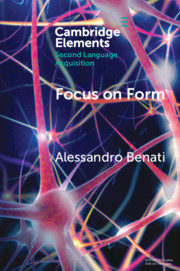Element contents
Focus on Form
Published online by Cambridge University Press: 27 April 2021
Summary
- Type
- Element
- Information
- Online ISBN: 9781108762656Publisher: Cambridge University PressPrint publication: 06 May 2021
Bibliography
Primary Sources
Secondary Sources
- 12
- Cited by

